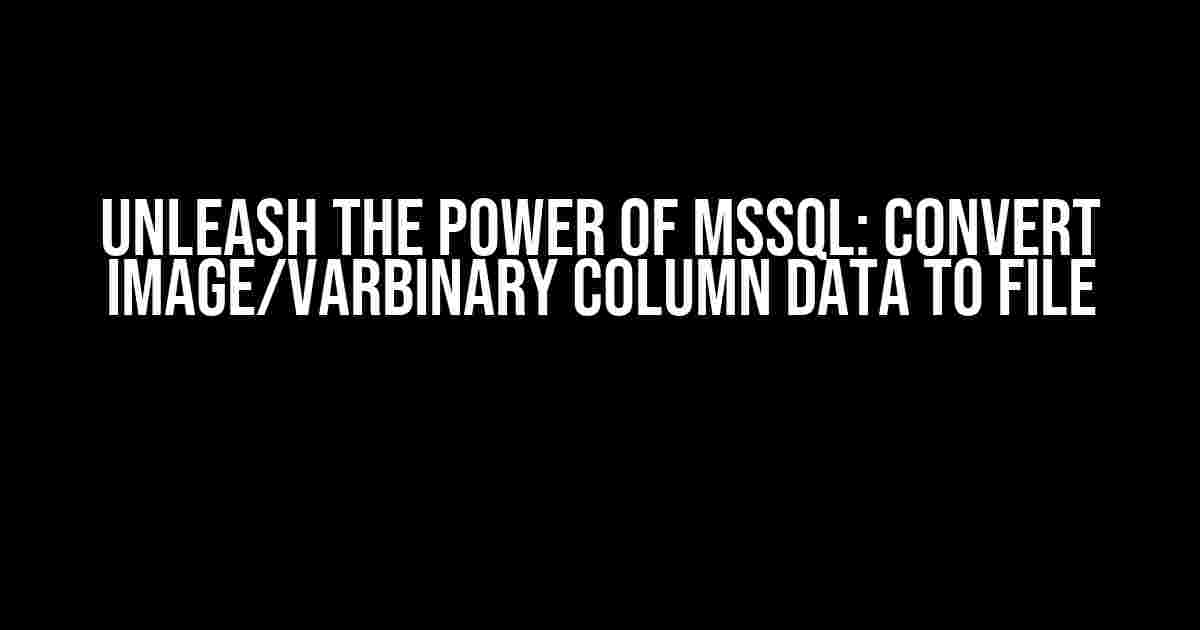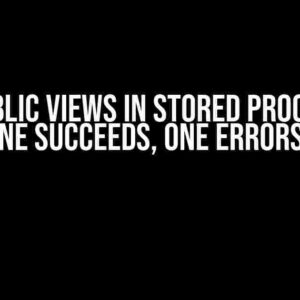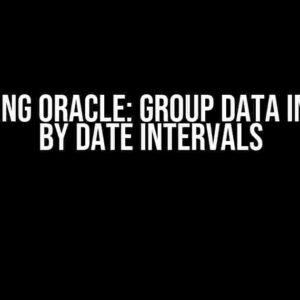Are you tired of dealing with bulky image and varbinary data stored in your MSSQL database? Do you struggle to retrieve and utilize this data efficiently? Worry no more! In this comprehensive guide, we’ll take you through the process of converting MSSQL image/varbinary column data to files, empowering you to unlock the full potential of your database.
Understanding Image and Varbinary Data
In MSSQL, image and varbinary data types are used to store binary data, such as images, audio files, and documents. While they serve a crucial purpose, working with these data types can be challenging, especially when it comes to retrieving and manipulating the data.
The Need for Conversion
There are several reasons why converting image/varbinary column data to files is essential:
- Improved Data Management**: By storing files on the file system, you can better manage and organize your data, making it easier to access and utilize.
- Reduced Database Size**: Converting image/varbinary data to files can significantly reduce the size of your database, improving performance and reducing storage costs.
- Enhanced Data Security**: By separating sensitive data from your database, you can improve security and reduce the risk of unauthorized access.
Method 1: Using T-SQL
One way to convert image/varbinary column data to files is by using T-SQL. This method involves creating a script that reads the binary data from the database and writes it to a file on the file system.
Step 1: Create a T-SQL Script
DECLARE @ImageData varbinary(max) DECLARE @FilePath nvarchar(50) DECLARE @FileContent varbinary(max) -- Replace 'YourTable' and 'YourColumn' with your table and column names SELECT @ImageData = YourColumn FROM YourTable WHERE YourCondition = 'YourValue' -- Replace 'C:\YourPath\' with your desired file path SET @FilePath = 'C:\YourPath\' + 'YourFileName' + '.jpg' -- Open the file stream OPENROWSET(BULK @FilePath, SINGLE_BLOB) AS FileImage -- Write the binary data to the file INSERT INTO FileImage VALUES (@ImageData) -- Close the file stream CLOSE ALL DEALLOCATE ALL
Step 2: Execute the Script
Execute the T-SQL script in your MSSQL management studio or using a T-SQL client. This will write the binary data to a file on your file system.
Method 2: Using SQL Server Integration Services (SSIS)
Another way to convert image/varbinary column data to files is by using SQL Server Integration Services (SSIS). This method involves creating a package that extracts the binary data from the database and writes it to a file on the file system.
Step 1: Create an SSIS Package
Create a new SSIS package and add the following components:
- OleDb Source: Connect to your MSSQL database and select the table and column containing the image/varbinary data.
- Script Component: This will be used to write the binary data to a file.
- File System Task: This will be used to create the file on the file system.
Step 2: Configure the Script Component
using System;
using System.IO;
public class ScriptMain : Microsoft.SqlServer.Dts.Pipeline.ScriptComponent
{
public override void Input0_ProcessInputRow(Input0Buffer Row)
{
byte[] imageData = (byte[])Row.ImageData;
// Replace 'C:\YourPath\' with your desired file path
string filePath = @"C:\YourPath\" + Row.FileName + ".jpg";
// Write the binary data to the file
using (FileStream fileStream = new FileStream(filePath, FileMode.Create))
{
fileStream.Write(imageData, 0, imageData.Length);
}
}
}
Step 3: Configure the File System Task
Configure the File System Task to create the file on the file system. Ensure the file path and name match the ones specified in the Script Component.
Step 4: Execute the Package
Execute the SSIS package to write the binary data to files on your file system.
Method 3: Using a Third-Party Tool
If you’re not comfortable with T-SQL or SSIS, you can use a third-party tool to convert image/varbinary column data to files. One popular tool is Apex Data Loader.
Step 1: Download and Install Apex Data Loader
Download and install Apex Data Loader from the official website.
Step 2: Connect to Your MSSQL Database
Connect to your MSSQL database using Apex Data Loader.
Step 3: Select the Image/Varbinary Column
Select the image/varbinary column containing the data you want to convert to files.
Step 4: Specify the File Path and Name
Specify the file path and name for the output files.
Step 5: Execute the Conversion
Execute the conversion process to write the binary data to files on your file system.
Best Practices and Considerations
When converting image/varbinary column data to files, keep the following best practices and considerations in mind:
- Data Security**: Ensure you have the necessary permissions and access controls in place to secure your data.
- Data Integrity**: Verify the integrity of your data before and after conversion to ensure data loss or corruption.
- File System Permissions**: Ensure the account executing the conversion process has the necessary permissions to write files to the file system.
- File Naming Conventions**: Establish a consistent file naming convention to avoid duplicate files and improve data management.
Conclusion
Converting image/varbinary column data to files is a crucial step in unlocking the full potential of your MSSQL database. By following the methods and best practices outlined in this guide, you’ll be able to efficiently retrieve and utilize your binary data, improving data management, reducing database size, and enhancing data security.
| Method | Pros | Cons |
|---|---|---|
| T-SQL | Easy to implement, flexible | Requires T-SQL expertise, limited scalability |
| SSIS | Highly scalable, easy to maintain | Requires SSIS expertise, complex setup |
| Third-Party Tool | Easy to use, fast implementation | Limited customization options, dependencies on third-party tool |
Choose the method that best suits your needs, and get ready to unleash the power of your MSSQL database!
Here are 5 Questions and Answers about “Convert MSSQL image / varbinary column data to file” with a creative voice and tone:
Frequently Asked Question
Having trouble converting your MSSQL image or varbinary column data to a file? You’re not alone! Here are some frequently asked questions and answers to help you overcome this hurdle.
Q1: How do I convert an image column in MSSQL to a file?
You can use the `BLOB` data type to store images in MSSQL, and then use the `SELECT` statement with the `PATINDEX` function to convert the image data to a file. For example: `SELECT * INTO OUTFILE ‘image.jpg’ FROM OPENROWSET(BULK ‘image_data’, SINGLE_BLOB) AS x`. Replace ‘image_data’ with your actual table and column names.
Q2: What is the best way to convert a varbinary column to a file in MSSQL?
You can use the `FILESTREAM` feature in MSSQL to convert a varbinary column to a file. This allows you to store large files outside of the database and still access them through T-SQL. You can use the `PATHNAME` function to specify the file location and name.
Q3: Can I use SQL Server Management Studio (SSMS) to convert image data to a file?
Yes, you can use SSMS to convert image data to a file. Simply right-click on the table containing the image data, select “Export Data”, and then choose the file format and location. You can also use the “OPENROWSET” function in SSMS to export the data to a file.
Q4: What are some common issues when converting image or varbinary data to a file in MSSQL?
Some common issues include incorrect file formats, corrupted files, and permission errors. Make sure to check the data type and format of the image or varbinary column, and also ensure that the database user has the necessary permissions to write files to the specified location.
Q5: Can I automate the process of converting image or varbinary data to a file in MSSQL?
Yes, you can automate the process using SQL Server Integration Services (SSIS) or a scheduled task to run a script that exports the data to a file. You can also use a programming language like C# or PowerShell to create a script that automates the process.
I hope this helps!




